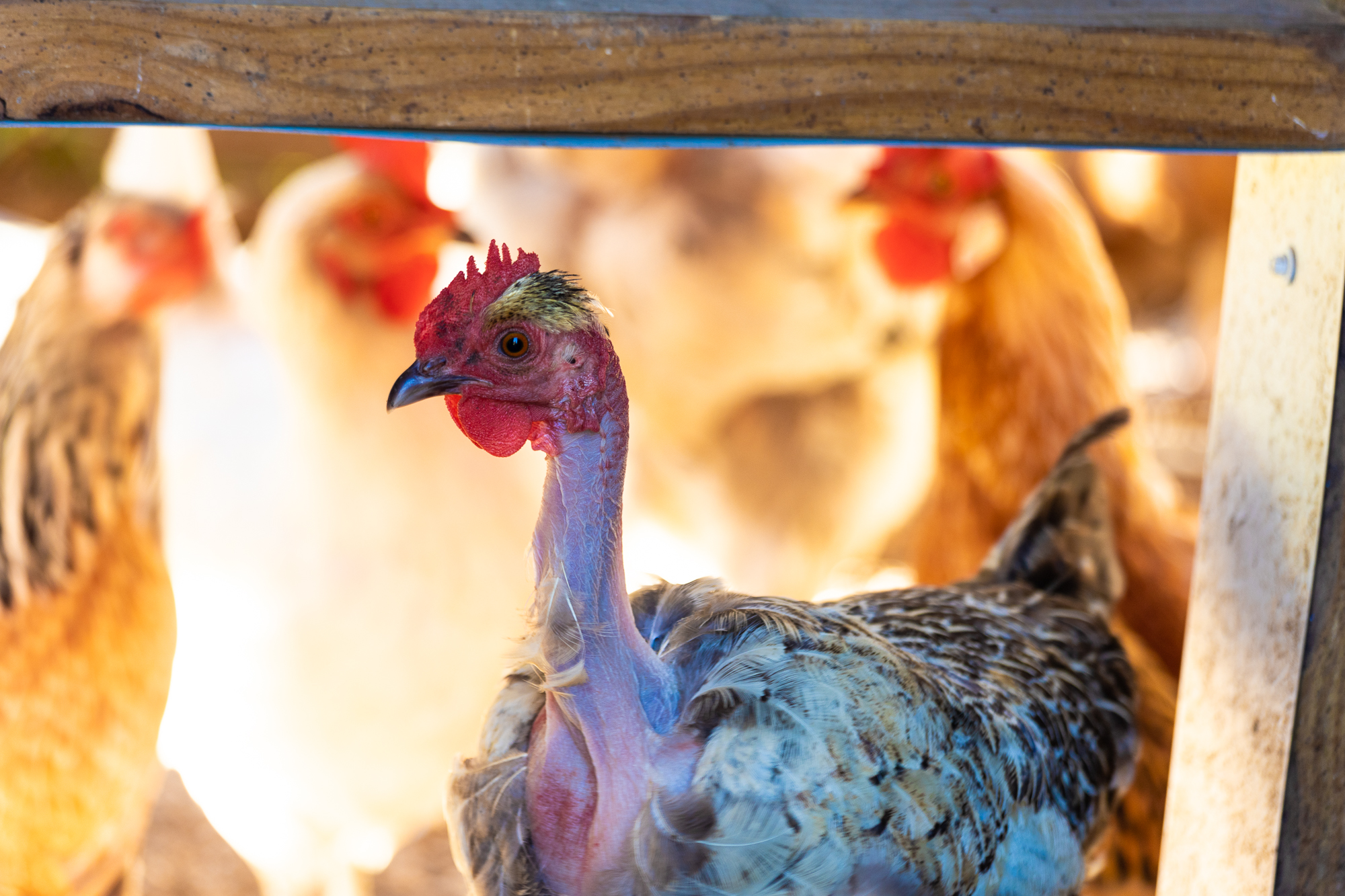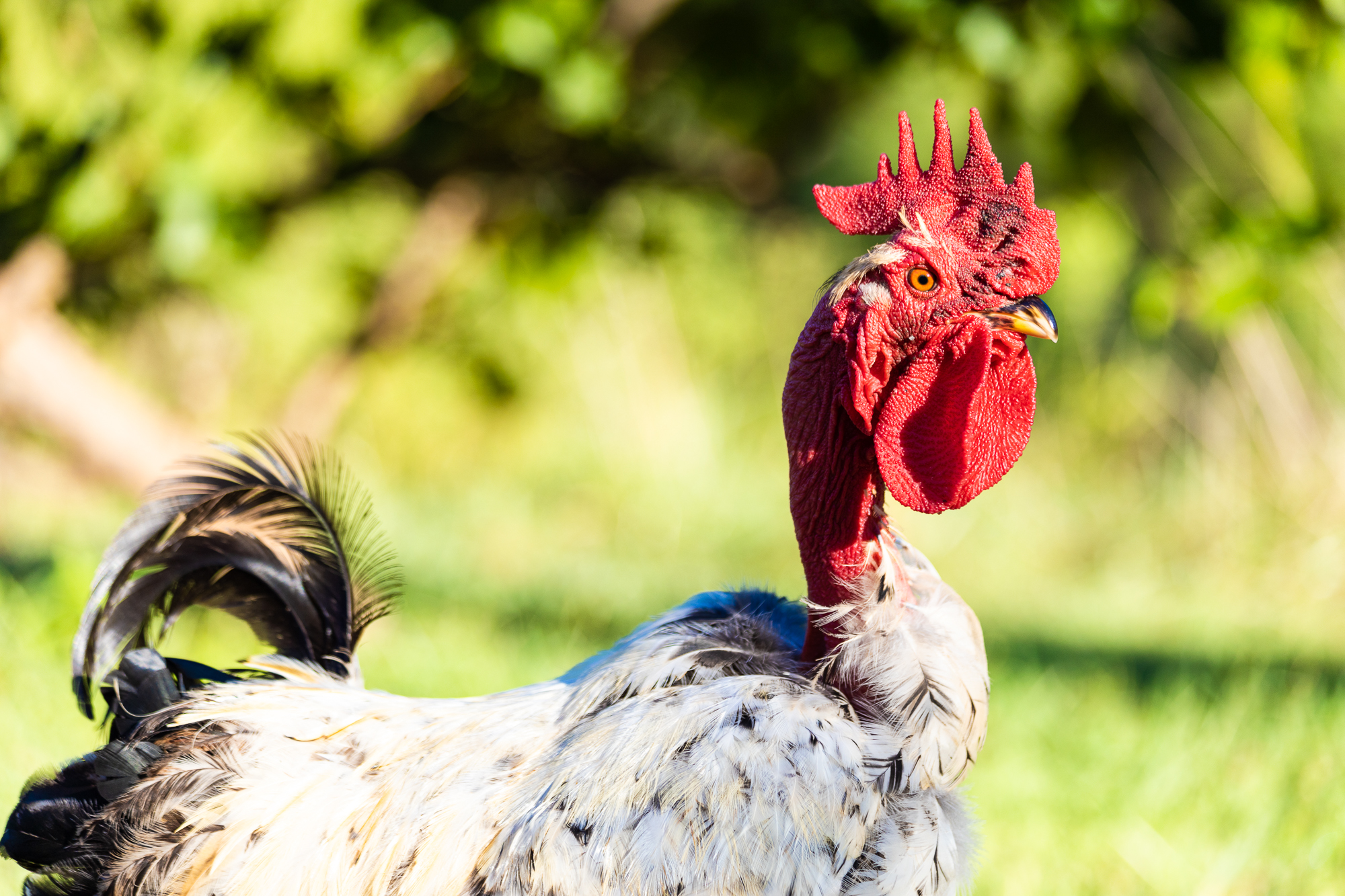If you’ve spent any time watching cooking shows, you may have heard of a turducken. However, have you ever heard of a Turken?
Yes! A Turken is a real thing, although it is not as it sounds. A Turken is a special breed of chicken that lacks feathers on its neck and vent area. It is not actually part turkey. Turkeys and chickens are unable to breed and produce offspring. (Although guinea fowl and chickens can!-but that is a story for another time!)
Along with being a great conversation piece, Turkens actually make quite amazing backyard chickens. Turkens, or Naked Necks, are said to have first originated in Romania, although no one knows for sure. They were originally called Transylvanian Naked Necks. Today, they can be seen all over the world, with a high population living in South America. In addition to having nearly no neck feathers, they also have almost half the body feathers of a normal chicken. This feature makes them extremely hot tolerant and hardy in Southern climates, like my home in Alabama! Despite this, Turkens are also very cold tolerant and can do well in Northern climates as well!
Here are some great reasons to add them to your flock!

They make good chickens to raise for meat.
Although on the smaller size, Turkens can be raised for meat. They are often eaten in South American countries. Their necks, upper chest, and lower torso actually completely lack any feathers at all. It isn’t immediately noticeable from looking at them, but they are already nearly naked when you pluck them. Some researchers think this is part of the reason for their creation. A bird with less feathers makes a much easier cooking bird.
They are fantastic layers!
Turken hens lay a light tan, medium sized egg. They are just as prolific as Rhode Island Reds and Australorps, but smaller in size, thus requiring less feed. In the fall, during molt, they will need less feed than an average chicken to grow in a new set of feathers. They also have a medium tendency to go broody. They are fiercely protective mothers who teach their chicks how to survive.
The roosters are very protective over their flock.
At my place, we have about 30 chickens (-last I checked- you know how chicken math works!)
Our main rooster in charge happens to be a 2 year old Turken named Chimp. Chimp takes very good care of his ladies! He always puts them first. He is very protective, but not mean. He is constantly busy sharing his feed with his ladies and keeping an eye out for predators in the sky. With any luck, one day we will have some little Turken bitties running around!

They are tend to live longer than other breeds.
Although each chicken is an individual, in my experience Turkens have outlived almost all my other breeds. This is due partly to the fact Turken hens tend to be overly cautious. Much like a Leghorn, Turken hens can be nervous and flighty. They are always the first to spot a hawk in the sky, and the fastest chicken to run for cover. Our oldest living chicken to date was a Turken hen my mother-in-law once gifted us. She lived to be probably 7 years old. She was impossible to catch, thus the reason for her long survival!
They are truly unique!
In addition to looking a little like a vulture, Turkens can come in pretty much any color you can imagine. The naked neck gene is dominant, so if you have one Turken, chances are it’s offspring will carry the gene. This means you can breed any type of chicken with them to produce a rainbow of colors! The most genetically pure Turkens will have a completely naked neck. Those that are half breeds will often have a little patch of feathers at the base of their neck. This is called a “bib.”
Beauty is in the eye of the beholder, and this definitely applies to Turkens. Whether you find them fascinating, or just odd, give Turkens a try the next time you order chicks! Chances are,